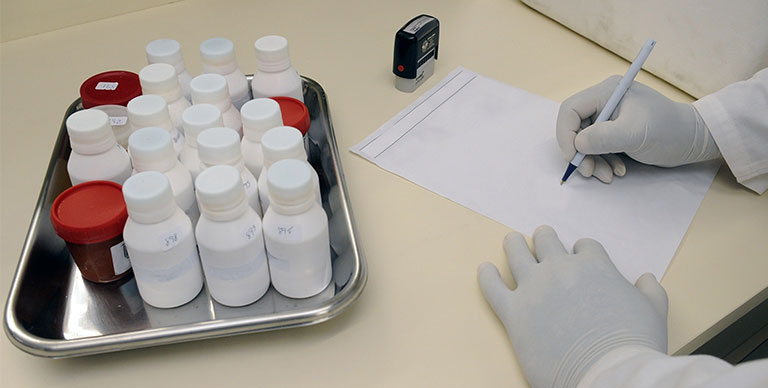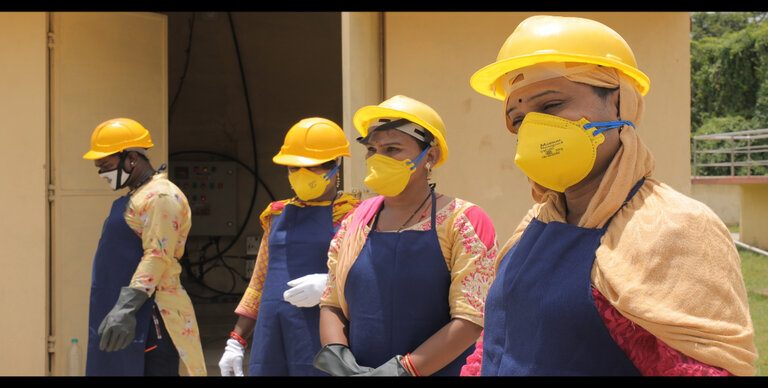Innovative approaches to reach the last mile for TB eradication by 2025
The National Strategic Plan 2017-25 outlines the Government of India’s goal of eliminating Tuberculosis (TB) in India by the year 2025. This is 5 years before the global deadline to eradicate and combat TB and a huge ask.
India currently accounts for a quarter of all the TB patients in the world both for TB as well as MDR (Multi-Drug Resistant) TB . Every year, 2 lakhs new patients in India are diagnosed with TB. To add to this burden are the large number of missing TB patients that remain undetected throughout their lifetime. The burden of this disease is tremendous and comes with its own challenges which include difficulties in timely detection, high out of pocket expenditures, social stigma associated with the disease, low adherence to treatment protocols etc.
“It is the era of partnerships. No one can work in silos towards our national goal of eliminating TB in India by 2025. It simply won’t work because the problem is too large.”
– Dr. Daksha Shah, TB Officer (Mumbai), Government of Maharashtra at the 10th Sankalp Global Summit held in Mumbai on the 11th and 12th of December, 2018.
Out of Pocket Expenditure on Tuberculosis in India
Prachi Shukla, Country Director of World Health Partners noted that ‘currently India spends about a dismal 0.1% of its GDP on publically funded drugs and diagnostics. The low contribution from the public sector implies that financial burden then shifts to the individual patient.
TB treatment is usually outpatient in nature which means that the patient is not admitted in a hospital in order to receive treatment. Most insurance programs in India do not cover the cost of outpatient care. This implies, in most cases even medically insured patients are left to pay for TB treatment. The cost of TB treatment today, ranges between Rs.3,800 and Rs. 5, 57, 000.’ The treatment for MDR TB tends to be higher and typically costs a patient around Rs.3-4 Lakhs on average which is unaffordable for most. This could potentially explain why treatment dropout rates remain high. Further, about 50%-60% of TB patients in India visit private sector providers where treatment costs are higher than that of the public sector. ‘The high out of pocket expenditure on TB treatment has a bearing on other aspects of nutritional intake and overall purchasing power of the affected household’ highlighted Neeraj Jain, Country Director of PATH India.
Recent Government Initiatives with respect to TB
The national government allocation to health has increased in the last year. The Government has also increased its allocation for TB by 25% compared to the last year and made diagnostic service available free of cost. The Government of India has more than 14,000 diagnostic centers for TB across the country. Neeraj also shared that ‘an incentive of Rs.500 a month for all tuberculosis patients has also been put in place, for the duration of the treatment has been approved, irrespective of their income level.
The National Strategic plan has altered the government’s approach to TB case detection from a passive to a more active one wherein primary health workers are required to make house to house visits in order to identify patients who are living with TB but are unaware of it. A medical practitioner failing to report a case of TB can also be punishable under the law . Community level initiatives for behavior change communication are also underway with the setting up of TB task forces at the community level.
Continuing limitations for TB Case Detection
The WHO typically takes about 8 years to endorse any new technologies / diagnostic devices noted Dr. Reuben Swamickan, TB Advisor at USAID. Even though there is a price ceiling cap of $17,000 for WHO approved Genexpert, the most advanced and accurate diagnostic device for TB detection (98% sensitivity), it remains unaffordable to most small private clinics in India. As a result, some may resort to inaccurate and unreliable serological (blood) antibody tests for diagnosing active TB. On the demand side, the market price for the molecular Genexpert testing is about Rs.3, 500 which remains unaffordable to many in India.
Innovations that can be fostered for TB care in India
More innovative financing models need to be explored highlighted Dr. Swamickan. Leveraging the strengths of both private and public players is critical to reaching the national goal of eliminating TB in India by 2025. Public private partnership models will go a long way in this regard. Daksha Shah, a TB officer at the Mumbai BMC, highlighted the Government of Maharashtra has partnered with around 200 chemists in Mumbai to act as distribution channels for TB drugs. In another instance, drug-resistant tuberculosis patients are now able to avail treatment and medicines at the private provider Hinduja Hospital in Mumbai at subsidised BMC rates under the government’s National TB Control programme partnership.
It needs to be understood that eliminating TB is not just a medical response, it is a social issue. Combating TB will involve addressing other issues of adequate nutrition, effective behavior change communication, core mobility factors for TB like HIV, diabetes, smoking etc. This will require a core comprehensive and collaborative response from both public and private players. The role for innovative financing models like insurance, impact bonds and cross sectoral partnerships need to leveraged to take the efforts to the next level.
We need to think deeper and identify means of how social enterprises and innovations can be fostered in this space in the next decade? Can we create a viable value proposition and Social Return on Investment for the private sector to be more participative?








